Spearhead Mound – Destroyed Burial Place Of Adena Giants?
Jan Bartek - AncientPages.com - Unfortunately, the ancient mystery of the Spearhead Mound in Ohio, North America, will never be solved. This intriguing ancient site is a lost legacy of the Native American people. Before being destroyed, archaeologists managed to excavate parts of the mound, and the discoveries made shed some light on the American mound builders.
The Spearhead Mound was once the largest mound in Hamilton County, Ohio. In 1839, a century before the mound was destroyed, Timothy C. Day gave a detailed description of the mound.
Small image: Willis Walker on the left investigating the skeleton found in the Spearhead Mound. Credit: James L. Morton, Department of Archaeology, Ohio Historical Society - Large image: native American Mound - Credit: US History Images
In the Monthly Chronicle of Interesting and Useful Knowledge Day, there was a large beech tree, two feet in diameter, growing on the summit of the mound. Day suggested the Spearhead Mound "is the monument of some mighty chief who lies interred in the center."
Could it once have been the burial place of an important, unknown ancient Native American leader?
When Day measured the Spearhead Mound it had "a circumference of 600 feet, height of 40 feet, and length and width of 250 and 150 feet." 1
Some years passed, and archaeologists at the time paid little attention to the mound. It seemed to be one of many mounds in North America, and why should this one be special?
In 1878, C.L. Metz examined the mound and observed the beech tree at the top was gone. It had become an Oak Tree four feet in diameter. Metz wanted to excavate the Spearhead Mound but did not receive permission from the landowner who considered this kind of archaeological study disrespectful to the dead who should be allowed to rest in peace.
In 1927, the Spearhead Mound had a new owner who permitted archaeological excavations that were conducted by Willis F. Walker, W.H. Haber, and John B. Jewett Jr., The scientists, tunneled into the mound and found the first burial three feet above the tunnel floor. This was a bark grave, and, in its vicinity, scientists also discovered a "leather helmet."
Old photo of the Spearhead Mound as it looked before it was destroyed. Credit: James L. Morton, Department of Archaeology, Ohio Historical Society
When scientists changed the direction of the tunneling, they encountered the "legs of a second, poorly preserved skeleton at the level of the tunnel floor. These were removed, as they lay over a third skeleton, one buried face downward. The feet of this "giant" were missing. Another "giant" was uncovered nearby, apparently associated with a ground stone celt, as well as a fifth skeleton, but more detailed information is lacking. It is stated, however, that with each skeleton was a "burial token" consisting of a lump of white chalk." 1
Along with these "giant" skeletons and some of their missing part, scientists also discovered sing of cremations, a ceremonial altar, two copper bracelets, and a stemmed flint blade.
Skeleton found by Walker and his team. Credit: James L. Morton, Department of Archaeology, Ohio Historical Society
"Walker illumined the tunnels with electric lights. Intent on preserving the mound as a museum, he charged sightseers a nominal admission fee, enough·to pull himself out of the Depression:' Walker planned to tunnel higher in the mound, but no information is available on subsequent excavations to 1927." 1
Scientists who visited the Spearhead Mound while Walker and his team studied it took photographs of the discoveries made inside the enigmatic mound.
The Spearhead Mound was destroyed in 1940 by gravel operations.
Such intriguing discoveries give reason to wonder who was buried inside the Spearhead Mound. Most scientists suggest the Spearhead Mound was an Adena structure.
Left: This wonderful carved pipe was found in the Adena mound in Chillicothe. It depicts what archaeologists think to be an Adena man wearing typical clothing and jewelry. Credit: Ohio History Central - Right: Painting from the Ancient Ohio art series depicting an Early Woodland/Adena (800 BC - AD 1) gathering at a ceremonial earthwork in the Hocking River Valley. Credit: Ohio History Central
The Adena people "were unique to territories east of the Mississippi River and most prominent in the Ohio River Valley. The time period for the Adena overlaps the Late Archaic and the Early Woodlands periods and has some characteristics of both along with its own unique traits."2
Scientists say the Adena moundbuilders were "the first people in the Eastern United States to develop agriculture, make pottery, smoke, construct earthen works and build wooden houses, and they were also the first architects of ceremonial structures." 2
According to scientists, the Adena physical type was characterized "as roundheaded with marked deformation, presumably from the use of cradleboard in infancy, and also by circular compression that rounded the skull into a horizontal plane and also elevated it. The face was long with prominent cheek bones and an unusually wide, bone chin. The Adena were medium height, with the average male standing 5,6" and the female 5,2". 2
Copper bracelets and stone celt discovered in the Spearhead Mound. Credit: James L. Morton, Department of Archaeology, Ohio Historical Society
The above-mentioned physical description of the Adena individuals does not help solve the Spearhead Mound mystery.
Either the people buried in the Spearhead Mound were no giants, or there are missing pieces to this story that have been overlooked. Native Americans tell the Spearhead Mound was built by ancient giants. This claim may be valid, but without a thorough investigation of the skeletons unearthed inside the mound, it is impossible to say who was buried there.
Sadly the destruction of the Spearhead Mound ended this archaeological story, and the ancient mystery will remain unsolved.
Updated on July 20, 2024
Written by Jan Bartek - AncientPages.com Staff Writer
Copyright © AncientPages.com All rights reserved. This material may not be published, broadcast, rewritten or redistributed in whole or part without the express written permission of AncientPages.com
Expand for references- James L. Murphy - Hamilton County's Spearhead Mound, Ohio State University Libraries Columbus, Ohio
- Schaftlein, David M. "The Adena" - Central States Archaeological Journal 28, no. 1 (1981): 27-28
More From Ancient Pages
-
 Curse Of The Scottish Fyvie Castle That Survived Generations
Featured Stories | May 5, 2020
Curse Of The Scottish Fyvie Castle That Survived Generations
Featured Stories | May 5, 2020 -
 A New William Shakespeare First Folio discovered on Isle of Bute, Scotland
Archaeology | Apr 10, 2016
A New William Shakespeare First Folio discovered on Isle of Bute, Scotland
Archaeology | Apr 10, 2016 -
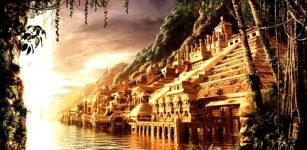 Paititi: Legendary Lost Inca City Of Gold Built By The Inca Hero Inkarri
Featured Stories | Mar 16, 2016
Paititi: Legendary Lost Inca City Of Gold Built By The Inca Hero Inkarri
Featured Stories | Mar 16, 2016 -
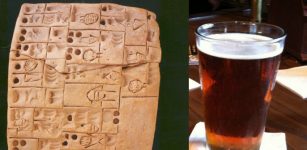 Oldest Evidence Of Beer Was Found On A Sumerian Tablet In Mesopotamia
Ancient History Facts | Jan 23, 2016
Oldest Evidence Of Beer Was Found On A Sumerian Tablet In Mesopotamia
Ancient History Facts | Jan 23, 2016 -
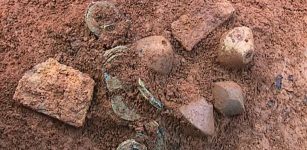 2,000-years-old tomb found in S. China
Archaeology | Apr 6, 2016
2,000-years-old tomb found in S. China
Archaeology | Apr 6, 2016 -
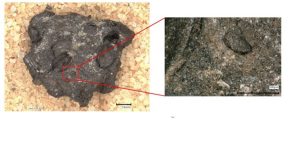 Millet Bread And Pulse Dough From Early Iron Age South India
Archaeology | Dec 20, 2021
Millet Bread And Pulse Dough From Early Iron Age South India
Archaeology | Dec 20, 2021 -
 Daily Life Of A Lady In Waiting – A Dangerous Profession Sometimes
Ancient History Facts | Aug 24, 2023
Daily Life Of A Lady In Waiting – A Dangerous Profession Sometimes
Ancient History Facts | Aug 24, 2023 -
 Mystery Of The Mandala: The Circle Of Life
Ancient Symbols | Jul 7, 2018
Mystery Of The Mandala: The Circle Of Life
Ancient Symbols | Jul 7, 2018 -
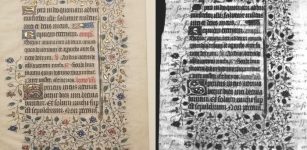 Hidden 15th-Century Text On Medieval Manuscripts – Discovered By Students
News | Nov 23, 2020
Hidden 15th-Century Text On Medieval Manuscripts – Discovered By Students
News | Nov 23, 2020 -
 An Expert Explains Why Tutankhamun’s Tomb Remains One Of The Greatest Archaeological Discoveries
Archaeology | Nov 2, 2022
An Expert Explains Why Tutankhamun’s Tomb Remains One Of The Greatest Archaeological Discoveries
Archaeology | Nov 2, 2022 -
 Sumerian ‘Mask Of Warka’ From Uruk: Sculptured Face May Depict Goddess Inanna
Featured Stories | Sep 15, 2016
Sumerian ‘Mask Of Warka’ From Uruk: Sculptured Face May Depict Goddess Inanna
Featured Stories | Sep 15, 2016 -
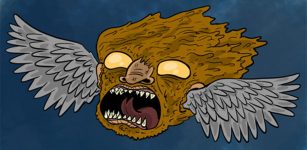 Horrifying Flying Head That Terrorized The Iroquois
Featured Stories | Sep 17, 2019
Horrifying Flying Head That Terrorized The Iroquois
Featured Stories | Sep 17, 2019 -
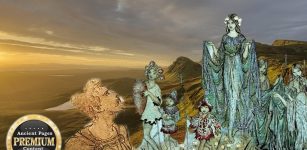 Unexplained Ancient Case Of Missing Time And Mysterious Disappearance Into An Underground World
Featured Stories | Feb 11, 2025
Unexplained Ancient Case Of Missing Time And Mysterious Disappearance Into An Underground World
Featured Stories | Feb 11, 2025 -
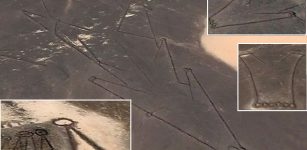 Thousands Unknown Ancient Structures Seen From Space: Puzzling Aerial Archaeology In The Middle East
News | Feb 15, 2014
Thousands Unknown Ancient Structures Seen From Space: Puzzling Aerial Archaeology In The Middle East
News | Feb 15, 2014 -
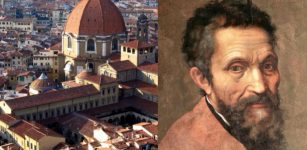 Michelangelo’s Hidden Secrets Under The Medici Chapel
Featured Stories | Jul 16, 2019
Michelangelo’s Hidden Secrets Under The Medici Chapel
Featured Stories | Jul 16, 2019 -
 Little People: Ancient Race That Pre-Dates Native Americans, Celts, And Other Settlers Worldwide
Featured Stories | Aug 29, 2024
Little People: Ancient Race That Pre-Dates Native Americans, Celts, And Other Settlers Worldwide
Featured Stories | Aug 29, 2024 -
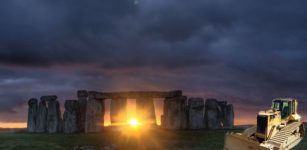 Can Stonehenge Be Saved From Bulldozers Or Have Druids Been Defeated?
News | Nov 10, 2020
Can Stonehenge Be Saved From Bulldozers Or Have Druids Been Defeated?
News | Nov 10, 2020 -
 Soap Was Invented In 2800 B.C By Babylonians
Ancient History Facts | Jun 17, 2016
Soap Was Invented In 2800 B.C By Babylonians
Ancient History Facts | Jun 17, 2016 -
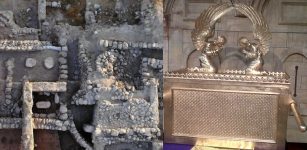 Mysterious Stone Table Found At Biblical Temple In Jerusalem – Evidence Of The Ark Of The Covenant?
Archaeology | Dec 20, 2019
Mysterious Stone Table Found At Biblical Temple In Jerusalem – Evidence Of The Ark Of The Covenant?
Archaeology | Dec 20, 2019 -
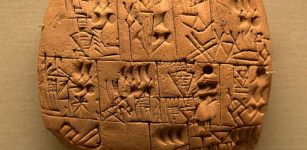 Uruk – Home To The Legendary Hero Gilgamesh
Featured Stories | Jun 6, 2021
Uruk – Home To The Legendary Hero Gilgamesh
Featured Stories | Jun 6, 2021





